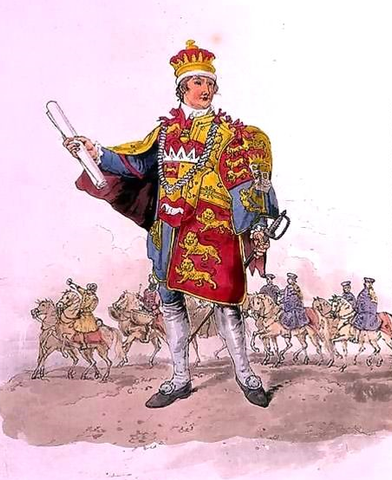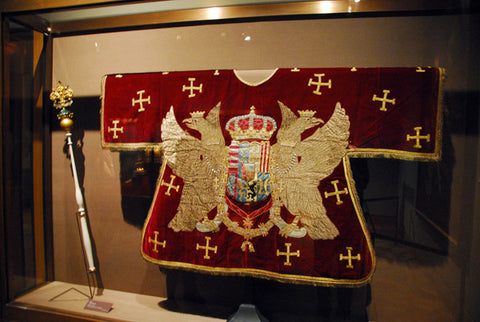
The Herald 2

In the late 13th Century lords started hiring their own private heralds. These private Heralds added to the lord’s prestige by announcing his name, achievemnets and tirles as he entered the arena for the jousting tournament.The herlad would wear the coat of arms of his lord on his surcoat. In the 15th Century tabards replaced surcoats as the fashionable garment to wear over armor and also became the official garment that the heraldwould wear. The last King to wear a tabard was King Henry VII and by the sixteenth century tabards were outof style for knights. The heralds kept wearing the distinctive uniforms and still do to the present day for official heraldic activities.
There are thee differing levels of herald. The first was the King of arms, the second the Herald of arms and the third was the Pursuivant of arms. The King of arms was in charge of a kingdom and wore a crown at official engagements. The herald of arms was entrusted with recording all new grantings of arms and ensuring that new grants of arms did not clash with coats of arms already in existence.The Pursuivant of arms was a junior or trainee herald. They wore their tabards "colley-westonward" (i.e. sideways with the sleeves in back and front and the large part draped over the sleeves).
There are thee differing levels of herald. The first was the King of arms, the second the Herald of arms and the third was the Pursuivant of arms. The King of arms was in charge of a kingdom and wore a crown at official engagements. The herald of arms was entrusted with recording all new grantings of arms and ensuring that new grants of arms did not clash with coats of arms already in existence.The Pursuivant of arms was a junior or trainee herald. They wore their tabards "colley-westonward" (i.e. sideways with the sleeves in back and front and the large part draped over the sleeves).










